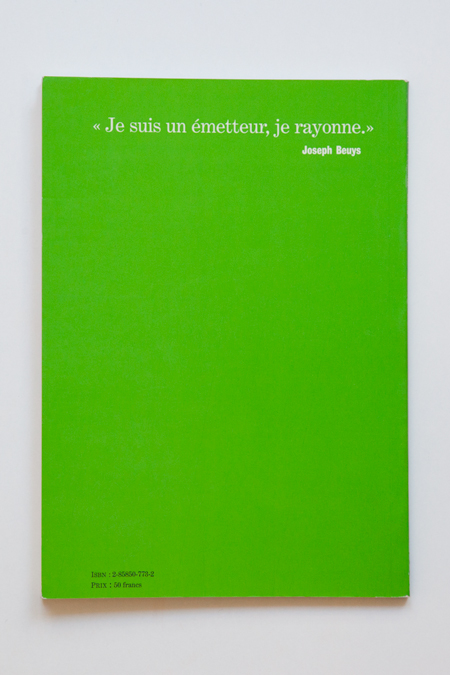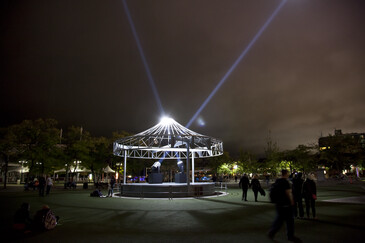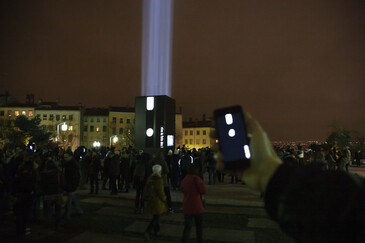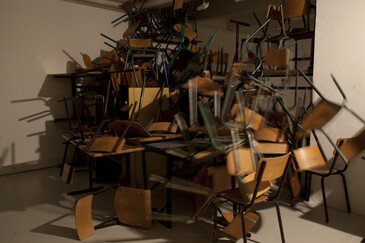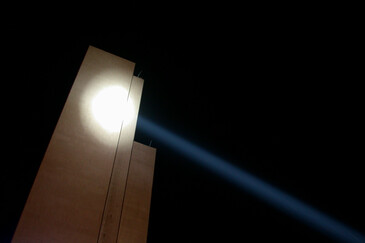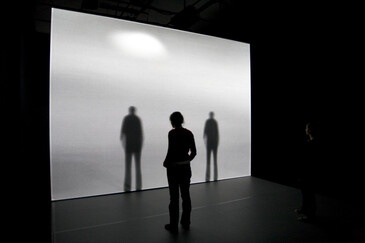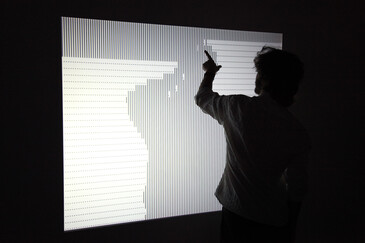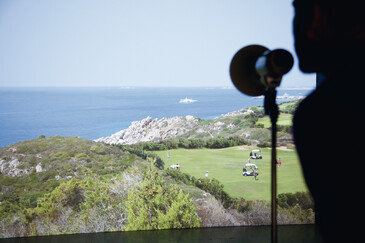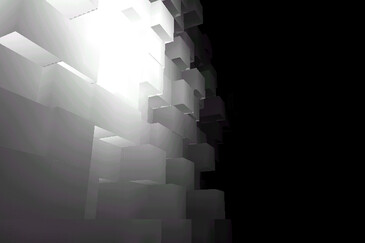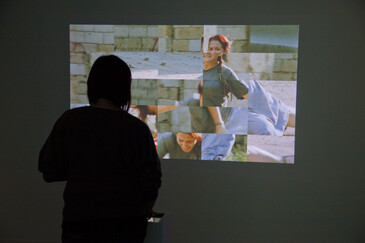
niform | Samuel Bianchini
Hercules Papaioannou (dir.)
Publié par le Musée Benaki, Athènes
et le MOMUs - Musée de la photographie de Thessalonique
Novembre 2022
Design graphique : Nikoletta Antonopoulou
Anglais et grec
26 pages, 23 x 22 cm

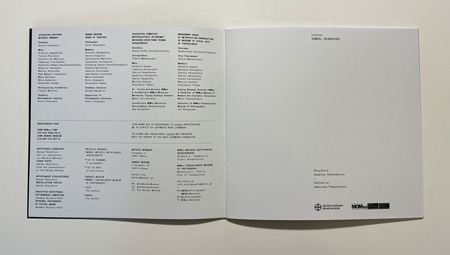


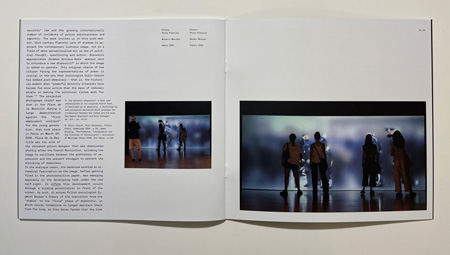

À DISTANCES
Œuvrer dans les espaces publics
Samuel Bianchini & Mari Linnman
Un livre édité par les Presses du réel
Collection Société des Nouveaux commanditaires
Juin 2017
Texte établi avec la collaboration de Cyrille Latour
Design graphique : Bertrand Sandrez
Assistanat éditorial : Élodie Tincq
Relecture : Pierre-André Orillard
La publication de cet ouvrage a été possible grâce au soutien de la Fondation de France,
de l’Université Paris 8 et du Labex Arts-H2H au titre du programme Investissement d’avenir
(ANR-10-LABX-80-01).
édition française
12,5 x 21 cm (broché, couv. à rabats)
144 pages (ill. coul. et n&b)
9.00 €
ISBN : 978-2-84066-958-6
Pour acheter l'ouvrage : www.lespressesdureel.com
Réaliser des œuvres d’art dans les espaces publics reste un défi : comment, dans ces lieux
caractérisés par de nombreuses sollicitations et activités, provoquer des expériences esthétiques et constituer un public ? Sans tomber dans les travers du monumental ou du décoratif, comment concevoir des œuvres qui interpellent subtilement nos sens ou provoquent des concernements, voire induisent des pratiques alternatives aux usages convenus ?
Dans cet ouvrage, Samuel Bianchini et Mari Linnman reviennent sur ces différents registres
d’expériences. Ils interrogent diverses façons de faire œuvre dans les espaces publics à
partir de leurs positions mutuelles et d’un cas d’étude : À Distances (2011 - 2014), une œuvre qu’ils ont produite ensemble dans le cadre de l’action Nouveaux commanditaires de
la Fondation de France pour la Maison du geste et de l’image, aux Halles, au cœur de Paris.

Sommaire
Avant propos
Introduction
La commande, l'œuvre et son processus de "recherche et création"
Entretien
1. À Distances, en public
2. En contexte
3. À usages multiples
Bibliographie










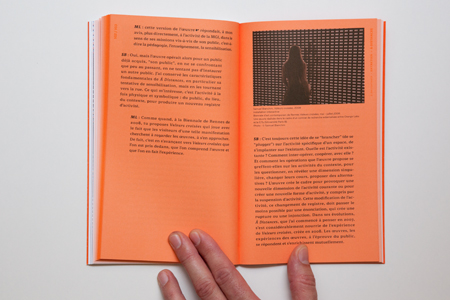


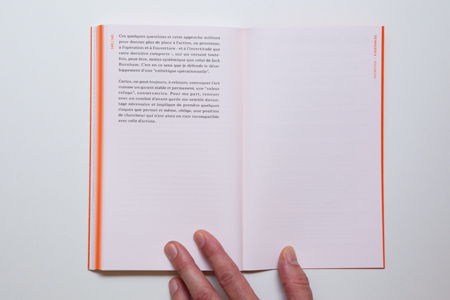
Samuel Bianchini est artiste et enseignant-chercheur à l’École nationale supérieure des Arts Décoratifs (EnsAD - PSL University, Paris) où il dirige le groupe de recherche Reflective Interaction d’EnsadLab, le laboratoire de l’EnsAD. Soutenant le principe d’une “esthétique opérationnelle”, Samuel Bianchini réalise régulièrement des œuvres et expérimentations artistiques dans des espaces publics, comme, en 2016, lors de la Nuit Blanche de Toronto, pour le Medialab Prado de Madrid ou encore, avec le Palais de Tokyo (Paris). Il associe à sa pratique un travail réflexif qui donne lieu à de fréquentes publications. Il a ainsi édité, en codirection avec Erik Verhagen, l’ouvrage Practicable - From Participation to Interaction in Contemporary Art, aux éditions MIT Press en 2016.
Mari Linnman est curatrice et médiatrice de l’action Nouveaux commanditaires de la Fondation de France. À ce titre, elle a collaboré, pour la production d’œuvres questionnant les espaces publics, avec de nombreux artistes, parmi lesquels : John Armleder, Alain Bublex, Yona Friedman, Ann Veronica Janssens, Martha Rosler, Claude Rutault, Jessica Stockholder, Superflex, et Jean-Luc Vilmouth. Mari Linnman codirige la galerie associative Contexts à Paris et fait partie de l’équipe artistique qui accompagne le prolongement de la ligne du tramway T3 Nord à Paris.

PRACTICABLE
From Participation to Interaction in Contemporary Art
Samuel Bianchini and Erik Verhagen, editors
with the collaboration of Nathalie Delbard and Larisa Dryansky.
Published by MIT Press, Leonardo Book Series.
952 pp. | 7 x 9 in | 164 b&w illus. | October 2016
Hardcover | $50.00 | £41.95 | ISBN: 9780262034753
For more informations and to buy: https://mitpress.mit.edu/books/practicable
Cover image: Piotr Kowalski, Mesures à prendre (Measure to be taken), 1969
Courtesy of Andrea Kowalski
How are we to understand works of art that are realized with viewers’ physical involvement? How are we to analyze a relationship between a work of art and its audience that is rooted in an experience both aesthetic and physical when “user experience” is a central concern of a society held in the grip of omnipresent interactivity? Between two seemingly opposed modes, contemplation and use, this book offers a third option: that of “practicable” works, made for and of audience action. Today, these works often use digital technologies, but artists have created participatory works since the mid-twentieth century. In this volume, critics, writers, and artists provide diverse perspectives on this kind of “practicable” art, discussing and documenting a wide variety of works from recent decades. Practicable returns to the mainstays of contemporary art from the 1950s to the present, examining artistic practices that integrate the most forward-looking technologies, disregarding the false division between artworks that are technologically mediated and those that are not. Practicable proposes a historical framework to examine art movements and tendencies that incorporate participatory strategies, drawing on the perspectives of the humanities and sciences. It investigates performance and exhibition, as well as key works by artists including Marina Abramović, Janet Cardiff, Lygia Clark, Piotr Kowalski, Robert Morris, David Rokeby, and Krzysztof Wodiczko, and features interviews with such leading artists and theoreticians as Matt Adams of Blast Theory, Claire Bishop, Nicolas Bourriaud, Thomas Hirschhorn, Bruno Latour, Seiko Mikami, and Franz Erhard Walther.
Contributors
Matt Adams (Blast Theory), Jean-Christophe Bailly, Samuel Bianchini, Claire Bishop, Jean-Louis Boissier, Nicolas Bourriaud, Christophe Charles, Valérie Châtelet, Jean-Pierre Cometti, Sarah Cook, Jordan Crandall, Dominique Cunin, Nathalie Delbard, Anna Dezeuze, Diedrich Diederichsen, Christophe Domino, Larisa Dryansky, Glória Ferreira, Jean-Paul Fourmentraux, Gilles Froger, Masaki Fujihata, Jean Gagnon, Katrin Gattinger, Jochen Gerz, Piero Gilardi, Véronique Goudinoux, Usman Haque, Helen Evans and Heiko Hansen (HeHe), Jeppe Hein, Thomas Hirschhorn, Marion Hohlfeldt, Pierre-Damien Huyghe, Judith Ickowicz, Eric Kluitenberg, Janet Kraynak, Bruno Latour, Christophe Leclercq, Frédérik Lesage, Rafael Lozano-Hemmer, Peter Lunenfeld, Lawrence Malstaf, Julie Martin, Seiko Mikami, Dominique Moulon, Hiroko Myokam, Ernesto Neto, Mayumi Okura, Eddie Panier, Françoise Parfait, Simon Penny, Daniel Pinkas, Chantal Pontbriand, Emanuele Quinz, Margit Rosen, Alberto Sánchez Balmisa, Frederik Schikowski, Arnd Schneider, Madeline Schwartzman, Luke Skrebowski, Vanessa Theodoropoulou, Rirkrit Tiravanija, Andrea Urlberger, Erik Verhagen, Franz Erhard Walther, Peter Weibel, Renate Wiehager, Catherine Wood, Giovanna Zapperi, Anne Zeitz, David Zerbib.
Contents
Series Foreword
Credits and Acknowledgements
Introduction: Practicable - Art in the Conditional
Samuel Bianchini and Erik Verhagen
I- From Cybernetics Onward
-1- Gordon Pask’s Cybernetic Systems: Conversations After the End of the Mechanical Age
Margit Rosen
-2- The Artist as Homo Arbiter Formae: Art and Interaction in Jack Burnham’s Systems Essays
Luke Skrebowski
-3- Two Decades of Interactive Art: Digital Technologies and Human Experience
Simon Penny
II- Art Scenes and Movements in Search of Participation
-4- Against the Spectacle: The Construction of Situations
Vanessa Theodoropoulou
-5- From Program to Behavior: The Experience of Arte Programmata in Italy, 1958–1968
Emanuele Quinz
-6- “The Breath Is Up to You”: On Some Works by Hélio Oiticica, Lygia Clark, and Lygia Pape
Glória Ferreira
-7- À la Recherche d’un Nouveau Spectateur: The Function and Significance of Play in the Participatory Environments of the Groupe de Recherche d’Art Visuel
Marion Hohlfeldt
-8- Katsuhiro Yamaguchi: Performances and Environments
Christophe Charles
-9- Tactical Media and the Aesthetics of Participation
Eric Kluitenberg
III- From the Vantage Point of the Humanities and Social Sciences
-10- Echoes of Pragmatism in Current Artistic Practices
Jean-Pierre Cometti
-11- Art/Anthropology Interventions
Arnd Schneider
-12- Habitable: Spectator Participation in Everyday Life
Anna Dezeuze
-13- From the Practice of Roles to the Facts of Consciousness: Art and Its Qualities
Pierre-Damien Huyghe
-14- Collaborating and Participating: A Connection Worth Examining
Véronique Goudinoux
-15- Public Operation: Net Art, Sociology, and Practicable Media
Jean-Paul Fourmentraux
-16- The Contractual Definition of the Work of Art: A Contribution to the Discussion of the Dispositif in Art
Judith Ickowicz
IV- Art in Action: On Performance
-17- Why Participate? On the Concrete Experience of Participatory Performances
Katrin Gattinger
-18- Haptic Vision: The Female Body and “Practicable” Art
Giovanna Zapperi
-19- Traveling Microbus Hordes: A Mobile Audience
Diedrich Diederichsen
-20- Demo n.0
Peter Lunenfeld
V- Bringing About Interaction, Grasping, and Seeing: Exhibiting Practicable Works of Art
-21- Toward a Dramaturgy of Interactivity
Jean-Louis Boissier
-22- Stop, Drop, and Roll With It: Curating Participatory Media Art
Sarah Cook
-23- Taking Hold of Images: Some Thoughts on the Free Handling of Photographs in Contemporary Art
Nathalie Delbard
VI- Some Key Works: Case Studies
-24- Robert Rauschenberg’s Oracle: “A Laboratory for Testing Perceptions”
Christophe Leclercq
-25- Lygia Clark’s Caminhando
Anna Dezeuze
-26- Charlotte Posenenske: Mimetic Minimalism and Practicability
Renate Wiehager
-27- The Artwork as Password: On Some Pieces by Piotr Kowalski
Jean-Christophe Bailly
-28- Robert Morris’s Bodyspacemotionthings: Participation Reenacted
Catherine Wood
-29- “Therapeutic” Participation: On the Legacy of Bruce Nauman’s Yellow Room (Triangular) and Other Works
Janet Kraynak
-30- Welcome! On Dan Graham’s Opposing Mirrors and Video Monitors on Time Delay
Françoise Parfait
-31- On Cruelty in Art: Marina Abramović, Rhythm 0
Gilles Froger
-32- Viewer-Instrumented Play: Very Nervous System by David Rokeby
Jean Gagnon
-33- When Objects Speak in Images: Krzysztof Wodiczko’s Homeless Vehicle Project as an Instrument of Public Discussion
Christophe Domino
-34- Reflections on Jeffrey Shaw’s Golden Calf, 1994
Daniel Pinkas
-35- Janet Cardiff’s Walks
Andrea Urlberger
-36- The Gravity of Art: On Carsten Höller’s Untitled (Slide), 2011
Madeline Schwartzman
-37- Exhibiting the Museum: The Hybrid Spaces of Workspace Unlimited
Dominique Moulon
VII- Words from Artists and Theoreticians: Interviews
-38- “Creating a Living Responsive Environment”
Julie Martin Interviewed by Christophe Leclercq
-39- The Action Is the Original
Franz Erhard Walther Interviewed by Erik Verhagen
-40- From Interaction to Public Authorship
Jochen Gerz Interviewed by Marion Hohlfeldt
-41- In Search of Relational Art
Piero Gilardi Interviewed by Emanuele Quinz
-42- “Open Fields of Enactment”
Peter Weibel Interviewed by Marion Hohlfeldt
-43- Reading Beyond Interactivity
Masaki Fujihata Interviewed by Dominique Cunin and Mayumi Okura
-44- “Form Is a Position”
Thomas Hirschhorn Interviewed by Eddie Panier
-45- Observational Practices: A Conversation on Rhythm, Pace, and Crowd Interaction
Jordan Crandall Interviewed by Anne Zeitz
-46- “Is There a Revolution?”
Rirkrit Tiravanija Interviewed by Chantal Pontbriand
-47- “A Direct Dialogue with One’s Own Perception”
Seiko Mikami Interviewed by Hiroko Myokam
-48- Everything Is Sculpture
Ernesto Neto Interviewed by Glória Ferreira
-49- Out of Control
Rafael Lozano-Hemmer Interviewed by Alberto Sánchez Balmisa
-50- Blast Theory: Playing with Publics
Matt Adams Interviewed by Frédérik Lesage
-51- “The Granularity of Participation”
Usman Haque Interviewed by Valérie Châtelet
-52- Critical Design: Art and Politics of Public Spaces
HeHe (Helen Evans and Heiko Hansen) Interviewed by Jean-Paul Fourmentraux
-53- Exhibiting the Visitor
Lawrence Malstaf Interviewed by Dominique Moulon
-54- “I See Each of My Works as a Tool”
Jeppe Hein Interviewed by Frederik Schikowski
-55- Composing the Political Arts: On the Modes of Being of Artworks and Their Public
Bruno Latour Interviewed by Samuel Bianchini and Jean-Paul Fourmentraux
-56- “Use Is Almost Meaning in Three Dimensions”
Nicolas Bourriaud Interviewed by Larisa Dryansky
-57- “The Myth of the Active Subject”
Claire Bishop Interviewed by David Zerbib
Bibliography
Contributors
Index




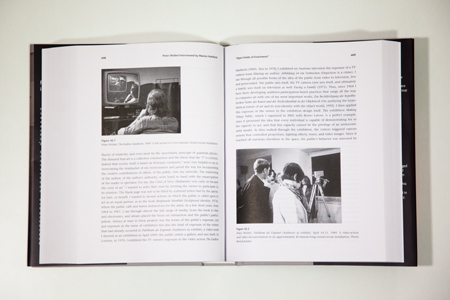

Editors
Samuel Bianchini, an artist and researcher, is associate professor at the École Nationale Supérieure des Arts Décoratifs (EnsAD), PSL Research University Paris, where he is the head of the Reflective Interaction Research Group of EnsadLab, the school’s laboratory.
web sites: www.dispotheque.org | www.ensadlab.fr
Erik Verhagen, an independent curator and art critic, is associate professor of Contemporary Art History at the Université de Valenciennes.
Credits
MIT Press:
Douglas Sery, Senior Acquisitions Editor New Media, Game Studies, Digital Humanities
Susan Buckley, Associate Acquisitions Editor Digital Media and Learning
Sean Cubitt, editor in chief of the Leonardo Book Series
Editorial support: Jian-Xing Too and Bronwyn Mahoney
Editorial assistance: Élodie Tincq
Copyediting: Bronwyn Mahoney and Mary Bagg
Picture research: Lisa Guedouar
The research behind this book and its publication has been supported by: Centre National de la Recherche Scientifique (CNRS), Agence Nationale de la Recherche (ANR), École Nationale Supérieure des Arts Décoratifs (EnsAD) / PSL Research University Paris, Communauté d’Universités et Établissements Lille-Nord-de-France, Maison Européenne des Sciences de l’Homme et de la Société (MESHS), and Laboratoire CALHISTE, Université de Valenciennes et du Hainaut-Cambrésis
![]()
A Case Study: Céleste Boursier-Mougenot
Edited by Samuel Bianchini & Emanuele Quinz
Published by Sternberg Press and École nationale supérieure des Arts Décoratifs – Paris PSL Research University
With the support of the Université Paris 8 and Labex Arts-H2H
Design by Bertrand Sandrez
August 2016, English
16.5 x 23 cm, 224 pages, 52 b/w and 50 color ill., softcover
ISBN 978-3-95679-172-7
€16.00
Contributions by Samuel Bianchini, Céleste Boursier-Mougenot, Jaime DeSimone, Jean-Paul Laumond, Florent Levillain, Emanuele Quinz, Bénédicte Ramade, Trevor Smith, Elisabetta Zibetti
Three grand pianos slowly make their way through the large exhibition space allotted to them, sometimes bumping into one another. These animate objects, which constitute offroad (2014), a work by the artist Céleste Boursier-Mougenot, appear to be living beings, each with its own behavior. They are perfect examples of behavioral objects, whose little-known history dates back to the avant-garde and the emergence of cybernetics.
What exactly is a behavioral object? How can it be analyzed, understood, theorized, experienced, and how can we conceive of works that possess the faculty of action and reaction to their environment and public? Examining three works by Céleste Boursier-Mougenot, this book tackles these questions and defines a new field of research and practice.

Contents
Behavioral Objects: A Case Study
Samuel Bianchini and Emanuele Quinz
Composing Movement
Céleste Boursier-Mougenot Interviewed by Emanuele Quinz
Musicians of Chance:
Orchestrating an Avian Soundscape
Trevor Smith and Jaime DeSimone
from here to ear
offroad: Profiling the Artwork
and the Audience Experience
Elisabetta Zibettu and Florent Levillain
offroad
Ex-Situ
Bénédicte Ramade
rêvolutions (Venice Biennale 2015)
Embodying Movement
Jean-Paul Laumond Interviewed by Samuel Bianchini
Biographies





Simulation technologique & matérialisation artistique Une exploration transdisciplinaire Arts / Sciences
Samuel Bianchini, Nathalie Delprat et Christian Jacquemin (sous la dir.)
Paris, Éd. L'Harmattan, déc. 2011.
S'appuyant principalement sur les technologies numériques, la simulation n'a cessé de se développer depuis une trentaine d'années. Aujourd'hui, la création artistique comme la recherche scientifique semblent préoccupées par les liens existant entre les univers numériques et le monde physique, et par les relations à inventer entre la simulation et de nouvelles formes de matérialisation : médias tangibles, prototypage rapide, physical computing, internet des objets, interfaces mixtes, réalité augmentée, captation gestuelle…
Cet ouvrage offre une vue d'ensemble des nombreux champs traversés par cette problématique. Il permet de découvrir des réalisations interdisciplinaires impliquant des contributions artistiques et scientifiques, ainsi que des textes critiques analysant l'impact de la simulation sur nos pratiques en sciences et en art contemporain. Du lecteur curieux d'avoir un aperçu de l'état de la recherche sur ces sujets au spécialiste désireux d'enrichir sa vision par une approche croisée, ce livre donne matière à réflexion et à discussion quant aux nouvelles pratiques et théories de la simulation et leurs possibles impacts sociétaux.

Sommaire
SIMULATION TECHNOLOGIQUE ET MATÉRIALISATION ARTISTIQUE
Samuel Bianchini, Nathalie Delprat, Christian Jacquemin
LE DÉPASSEMENT DU MÉDIUM ET L’IMMATÉRIALITÉ :
UNE APPROCHE SYMÉTRIQUE ENTRE LE NUMÉRIQUE ET LA CRÉATION ARTISTIQUE CONTEMPORAINE
Konstantinos Vassiliou
SIMULATION NUMÉRIQUE :
UN NOUVEL ÉTAT DE LA REPRÉSENTATION ?
Colette Tron
DE LA PRÉSENCE À DISTANCE INCARNÉE À LA THÉORIE DU COMPLOT
Jean-Louis Weissberg
(VOIR)3 : LE CUBE À CONTEMPLATION
Marie Juliette Verga
VISIBILITÉ/INVISIBILITÉ : LA QUESTION DU « MODÈLE » DANS DIFFERENTS RÉGIMES DE FIGURATION.
Sophie Lavaud-forest
LES INTANGIBLES
Emmanuel Mahé
DE PART ET D’AUTRE DE L’INTERFACE :
LES CONTINUITÉS ESTHÉTIQUES ET SCIENTIFIQUES
Céline Coutrix, Dominique Cunin, Mayumi Okura, Marcos Serrano
ENACTIVE ANALYSES OF INTERACTIONS:
DANCER – PUBLIC – ENVIRONMENT
Maria Christou, Annie Luciani
GESTES RÉELS, SONS VIRTUELS
Daniel Arfib, Jean-Julien Filatriau
LE BROUILLARD COMME OBJET DE SIMULATION :
LA QUESTION DU SENSIBLE ET DE L’IMAGINAIRE
Rami Ajaj, Nathalie Delprat, Christian Jacquemin
ORGUE : INTÉRIEUR/EXTÉRIEUR
Christophe d’Alessandro et Markus Noisternig
SPLINE ET IDÉAL, OU LA CRÉATION D’ŒUVRES NUMÉRIQUES ANIMÉES ET ÉLASTIQUES
Eric Bittar, Olivier Nocent
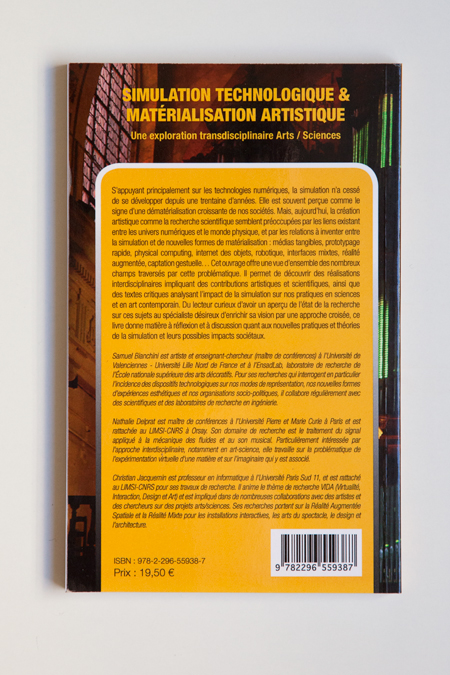
Recherche & Création
Art, technologie, pédagogie, innovation
Sous la direction de Samuel Bianchini
Coédition Les Éditions du Parc, Énsa Nancy/Burozoïque, 2010
Pour permettre un investissement pratique, critique et prospectif d’envergure dans un rapport renouvelé et négocié aux technologies, il est aujourd’hui essentiel de positionner la création artistique comme un domaine de la Recherche, reconnu en tant que tel, et associé aux réseaux d’excellence déjà constitués dans les autres disciplines. En France, à l’instar de l’École nationale supérieure d’art de Nancy, quelques établissements se sont engagés dans cette voie et ont initié d’ambitieux projets de laboratoires, ateliers, post-diplômes et cycles de recherche. Après dix années d’expérience et de prospection dans ce domaine au sein du réseau Artem, au côté de l’École des Mines et de l’École de Management (ICN Business School) de Nancy, l’École nationale supérieure d’art de Nancy associé au jeune éditeur Burozoïque a souhaité rendre compte de cette nouvelle dynamique nationale.
En prise avec les technologies, ce que nous nommons “Recherche et Création” n’est plus un vain mot. Mais la “R&C” introduit de nouvelles perspectives autant que de nombreuses questions. Elle requiert un travail collectif nécessitant une articulation des compétences, en particulier entre création et ingénierie. Elle entraîne à renouer en profondeur avec la technique. Elle renouvelle les liens entre pratique et théorie. Elle dynamise les opportunités de dialogue avec d’autres disciplines - en particulier scientifiques - et d’autres secteurs, comme l’industrie. Elle oblige à reconsidérer nos modes d’exposition, de diffusion des oeuvres et de relation au public. Elle réagence une économie de l’art, marquée elle aussi par le marché. En contexte pédagogique, elle redistribue les rôles entre artistes, enseignants‑chercheurs et étudiants. Et elle permet de rejoindre la stratégie internationale
d’essor et de rayonnement des grandes institutions de recherche et de formation. Si le mouvement est maintenant amorcé et commence à être compris des décideurs tant publics que privés, qui y voient aussi, à juste titre, une opportunité de développement, d’innovation et de valorisation, il reste encore largement à consolider.
S’appuyant sur ces expériences signficatives et sur la vision de personnalités, artistes et
chercheurs du domaine, cet ouvrage dirigé par Samuel Bianchini (artiste et enseignant-chercheur) propose les bases d’une véritable politique de Recherche et Création avec les technologies, à la confluence des arts contemporains, des milieux de la recherche, de la pédagogie et de l’innovation.

Sommaire
Le contexte d’un moment donné, notes de préface
Antonio Guzmán
R&C Recherche et création
Samuel Bianchini
La collaboration comme dispositif de recherche. Experiments in Art and Technology et l’Art and Technology Program du Los Angeles County Museum
Christophe Leclercq
L’art à l’épreuve de la recherche, profession et identité artistiques en mutation
Jean-Paul Fourmentraux
Une recherche en pratique
Thierry Fournier
Un cas d’école. Entretien entre trois anciens étudiants de l’Arc ElectroShop 4.0 de l’Énsa de Nancy : Marie Duchêne, Hélène Perreau, Jean-François Robardet
Espaces sonores en réseau. Pratiques de la recherche en art
Jérôme Joy & Peter Sinclair
Sliders. Un imaginaire de la relation
Jean-Marie Dallet
Expérimentation, essai et oeuvre didactique.
Entretien de Jean-Louis Boissier avec Samuel Bianchini
Recherche en art ? L’expérience Œuvres partagées
David-Olivier Lartigaud
Le contrat de relation des dispositifs interactifs. Art et technique ?
Dominique Cunin
Méta-capitalisme, art et transmission
Christophe Bruno
H.A.R.D practices. Pour une tribologie des coopérations entre l’art et la R&D
Emmanuel Mahé
Transfert de technologie outils et structures à explorer et à construire pour une « recherche artistique »
Hélène Rambert
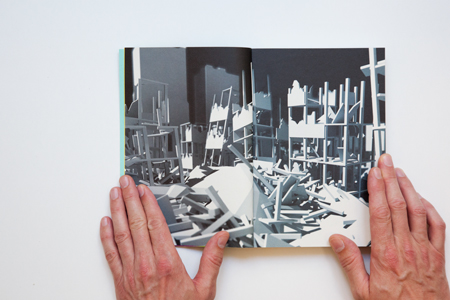








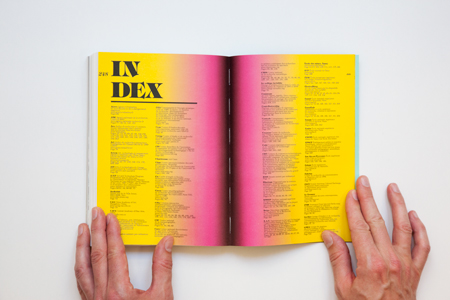


Joseph Beuys - films et vidéos
Fabrice Hergott avec la collaboration de Samuel Bianchini et Julie Heintz
Paris, Éd. Centre Georges Pompidou, 1994
Ce catalogue a été réalisé dans le cadre de l'exposition "Joseph Beuys", organisée par le Kunsthaus de Zurich et présenté au Centre national d'art et de culture Georges Pompidou, Paris, du 30 juin au 3 octobre 1994.

Sommaire
Préface
L'art élargi en pleine lumière
Fabrice Hergott
Essais
Image de l'être, image du mouvement
Julie Heintz
"L'expression la plus forte de l'art chez Beuys est dans son visage"
Joseph Beuys et les médias audiovisuels
Eugen Blume
Le concept élargi de l'art : un scénario
Joseph Beuys dans le contexte audio-visuel de son temps
Günter Minas
Remplacer les médias par des monuments
Samuel Bianhcini
Témoignages
Gespräch am Strand zu lang
"Les discours au long cours sont trop lourd"
Ole John
Dillinger
Klaus Staeck
Soziale Plastik
Lutz Mommartz
Notices des films de la collection
établies par Günter Minas et Dominick Loos
Filmographie
établie par Samuel Bianchini et Julie Heintz






